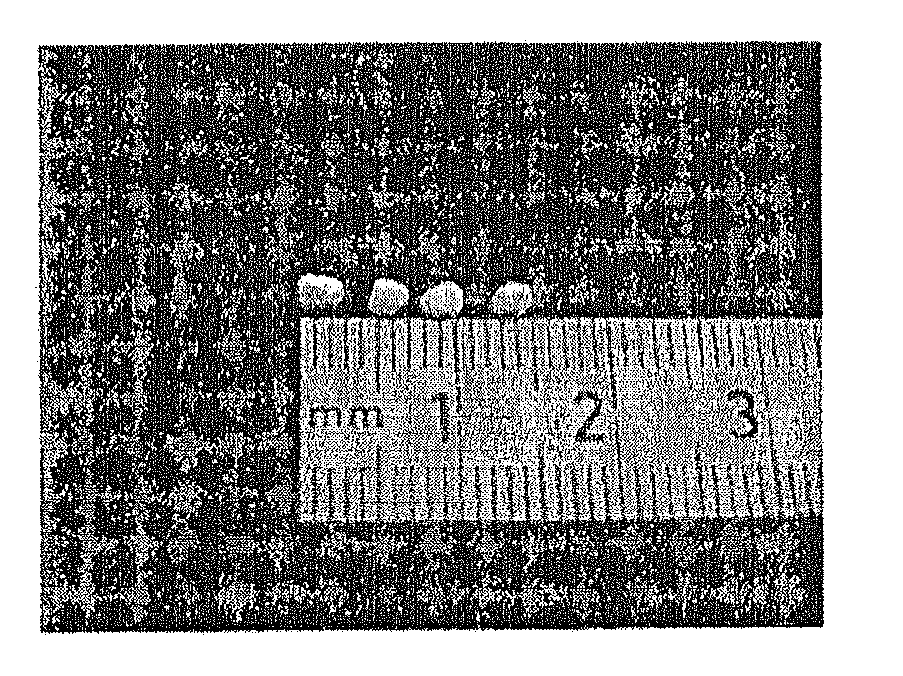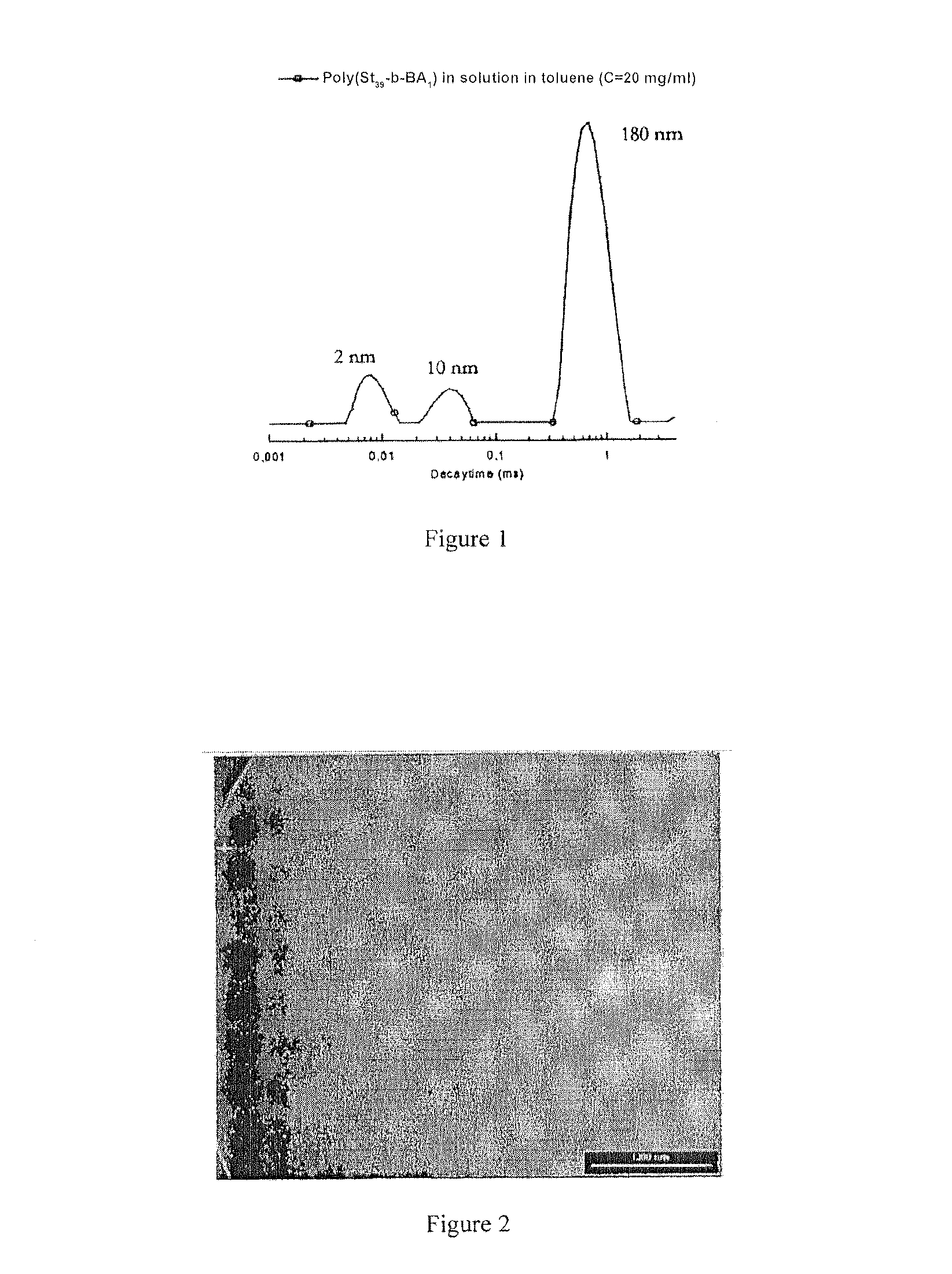Catalyst system, method of manufacture and use
a catalyst and catalyst technology, applied in the field of catalyst systems, methods of manufacture and use, can solve the problems of high cost of inorganic carriers used in the prior art, alter and complicate the synthesis of the catalyst of the present invention, etc. cost of the inorganic carriers of the prior art is much higher, and the thermomechanical and optical (transparency) properties of the final material are affected
- Summary
- Abstract
- Description
- Claims
- Application Information
AI Technical Summary
Benefits of technology
Problems solved by technology
Method used
Image
Examples
example 1
Synthesis of Copolymers
[0072]Linear polystyrenes carrying a benzoic acid (BA) function at the end of the chain as well as linear poly(styrene-b4-vinyl benzoic acid) (poly(St-b-BA) diblock copolymers are synthesised by Atom Transfer Radical Polymerisation (ATRP).
[0073]The polystyrenes carrying a terminal benzoic acid function are obtained by en mass polymerisation of the styrene using a 4-(1-bromo ethyl)benzoic acid initiator, as indicated in diagram 2 below.
[0074]The block copolymers are synthesised by en mass sequenced polymerisation of styrene and 4-vinyl methyl benzoate. The transformation of the ester function into a benzoic acid function is achieved in a second step by saponifiction reaction. The process of synthesis of the block copolymers (poly(St-b-BA) is summarised in diagram 3 below:
[0075]The characteristics of the copolymers are set out in table 1 below:
TABLE 1Characteristics of the linear polystyrenes carryinga benzoic acid function and poly(styrene-b 4-vinyl benzoicacid...
example 2
Putting Copolymers in Solution: Micellisation
[0076]In solution in toluene, the linear polystyrenes manufactured in example 1 carry one or more benzoic acid functions organised to form micellar objects and micelle aggregates, with a size of approximately 200 nm. This behaviour is explained by the fact that toluene is a good solvent of polystyrene but not of 4-vinyl benzoic acid units, which self-assembly to form the core of the micellar objects.
[0077]Associated auto system obtained from a polystyrene carrying a benzoic acid terminal function, with a molar mass of 3600 g / mol, in toluene: the size and distribution of the objects formed in toluene, measured by diffusion of light, are presented in the accompanying FIG. 1.
[0078]These results were confirmed by transmission electron microscopy (TEM) as testified to by the photograph presented in the accompanying FIG. 2, which is a transmission electron microscopy (TEM) image of the micelles and aggregates and micelles of linear polystyrene ...
example 3
Synthesis of Methylaluminoxane (MAO) within the Micelles
[0082]For the purpose of synthesising MAO, which is an activator of metallocenes and post-metallocenes, within the micellar systems manufactured in the above example, TMA is then added to the medium.
[0083]The TMA diffuses inside the micelles and then reacts with the encapsulated benzoic acid (see benzoic acid / TMA reaction described above). After two days of reaction at 60° C., a new analysis of the solution by diffusion of light shows that the size of the aggregates before and after the addition of TMA remains of the same order of magnitude. This is explained by the reaction of the TMA at the core of the micelles in order to form the aluminic compound with a structure of the MAO type.
[0084]It should be noted that, if the TMA had remained at the periphery of the micelles, a substantial increase in the size of the micelles and aggregates would have had to be observed. The data obtained by light diffusion after the addition of fre...
PUM
| Property | Measurement | Unit |
|---|---|---|
| concentration | aaaaa | aaaaa |
| molar ratio | aaaaa | aaaaa |
| molar ratio | aaaaa | aaaaa |
Abstract
Description
Claims
Application Information
 Login to View More
Login to View More - R&D
- Intellectual Property
- Life Sciences
- Materials
- Tech Scout
- Unparalleled Data Quality
- Higher Quality Content
- 60% Fewer Hallucinations
Browse by: Latest US Patents, China's latest patents, Technical Efficacy Thesaurus, Application Domain, Technology Topic, Popular Technical Reports.
© 2025 PatSnap. All rights reserved.Legal|Privacy policy|Modern Slavery Act Transparency Statement|Sitemap|About US| Contact US: help@patsnap.com



